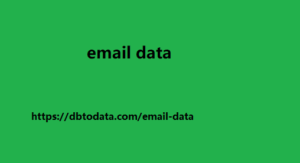Personal marketing, online success, the popularity that anyone with commitment, perseverance and some skill can achieve, is contrasted by a counter-social side of human nature with the affirmation of “private” Social Media, where you can express yourself even without filters while having the guarantee of anonymity, or with targeted sharing through the so-called “Dark Social”: this latter phenomenon is not a new one, given that even just sending a link via email (or to be more modern via Whatsapp) represents a type of non-public and targeted sharing that falls into this mysterious category.
Some numbers taken from
Tagliaerbe and obtained from : > 32% of people who share content online do so only through Dark Social > 69% of all sharing activity happens through Dark Social, versus 23% on Facebook > 36% of Dark Social shares happen via mobile devices Dark Social and Anonymous Social Media bring with them very respectable numbers: it is therefore clear how a sort of Social counter-movement is gaining ground with force , which says no to popularity, to visibility at all costs and to personal marketing to make room for a more private sharing, which proceeds through restricted and reserved circles or which communicates contents to many undefined recipients, but hiding the sender.
There has been a lot of talk about Dark Social
But what are Anonymous Social Media? These are Social Networks where users do not have a public profile but can post streams of content without a declared “authorship” and, clearly, see the content of other anonymous users. From a research france email list by We Are Social that you can find here , there are 3 large “anonymous” social networks that can count on a certain, growing, success: 1. Whisper In Whisper the user has his own profile. To publish content, he can choose a phrase to which he can then associate a photo suggested by Whisper itself. Most inflated topics: embarrassing moments, curious questions and confessions . Other users can see where the content was produced (geolocation always active) and can respond.
With content of the same format or give a sort of like to the content
2. Yik Yak In this Social, instead, users do not have a profile: there is a flow of (textual) content that users can like or dislike. Essential and fundamentalist! 3. Secret There is also Secret, which is closing down . Very similar to Yik Yak but with the ability to also insert images and chat. Users can see the secrets of people in their address book, if they provide their cell phone number. Thinking about it, the target seems to be almost adolescent, even if at the moment there is no certain data on who uses these strange Social Networks.
Examples from brands What interests me personally, in the end, is: can these channels be interesting for brands? The answer is yes… in fact, there are already several case studies, with important brands that have decided to exploit the important numbers of these Social channels. Whisper has 3.5 billion page-views a month Yik Yak has been in the Top 10 social app download chart for months Secret claims to have ‘millions of monthly active users’ but doesn’t reveal any exact figures Source: We Are Social.
A couple of interesting cases reveal how
The target of these social networks is mainly adolescents, so no millennials but the young consumers of today and tomorrow. Being where your audience is Paramount on Whisper Paramount used Whisper to promote their new movie “Men, Women & Children,” which is based on the themes of technology and relationships. They posted photos and quotes that asked users about relationships, moods, and how to adapt your digital strategy to the hyperconnected context their relationship with technology. High engagement. MTV Virgin Territory As many as 10,000 posts “user generated content”, that is, generated by users at the instigation of MTV, whose goal was to promote the program “Virgin Territory”. Topics addressed by users: the “first time” in bed and relationships between peers. In essence, in the cases analyzed (and in others) the brands first ride and then subvert the anonymity of these Social Networks.
How can brands leverage Anonymous Social Networks
There are all the advantages for brands in attempting small campaigns in these unexplored scenarios, even if they are still niche virtual spaces, but job data with considerable potential and used by an elusive target like few others… The advantages I have identified are: trigger virality and curiosity; hit targets that are often very young; listening to the network (anonymity allows users to be free to criticize, without fear of making observations) or qualitative market research; explore “new digital territories” and show themselves as innovators; share promotions (example: “hey guys, I’m giving you this 20% discount on www… don’t tell anyone!”) The real question about Anonymous Social Media, however, is: will it become a mass phenomenon or will it just be a passing fad?

